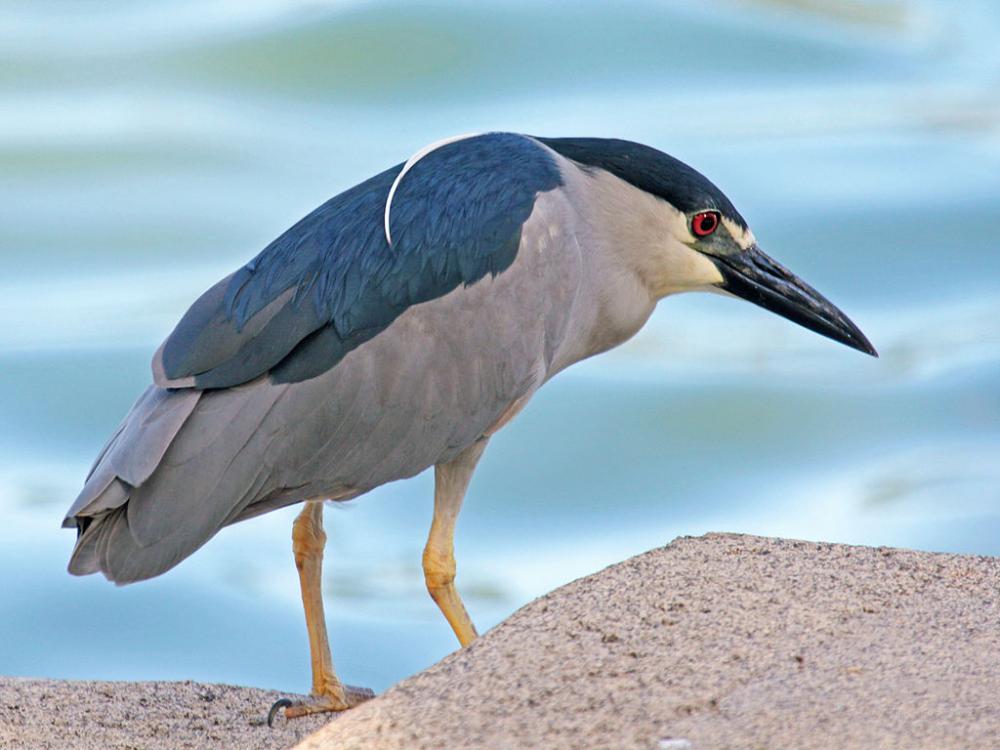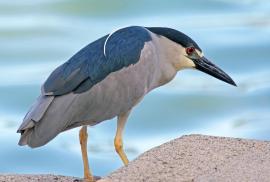Guide to Boreal Birds
Overview
As its name implies, this noisy bird is largely nocturnal, beginning to forage at dusk, when other herons are on their way to roosts. Night-herons are less likely to nest in mixed colonies than other herons; when they do, they often keep to themselves in a separate corner. These birds are sluggish hunters, standing quietly for long periods of time waiting for a frog or fish to pass by. They also plunder the nests of other herons and make regular nighttime visits to colonies of terns or Franklin's Gulls, where they sometimes take large numbers of chicks. Night-herons also stalk in grasslands in places where meadow voles are abundant, preying on these small rodents.
Description
23-28" (58-71 cm). W. 3'8" (1.1 m). A medium-sized, stocky, rather short-necked heron with black crown and back, gray wings, and white underparts. Bill short and black, legs pinkish or yellowish. In breeding season it has 2 or more long white plumes on back of head. Young birds are dull gray-brown lightly spotted with white. Young Yellow-crowned Night-Herons are grayer, with stouter bills and longer legs.
Voice
Loud, barking kwok! or quawk! often heard at night or at dusk. Utters a variety of croaks, barks, and other harsh calls in nesting colonies.
Nesting
3-5 pale blue-green eggs in a shallow saucer of sticks or reeds in a thicket or reedbed; occasionally in tall trees. Nests in colonies, sometimes with other species of herons.
Habitat
Marshes, swamps, and wooded streams.
Range/Migration
Breeds throughout United States (except Rocky Mountain region), from Washington, Saskatchewan, Minnesota, and New Brunswick to southern South America. Winters in southern half of United States. Also occurs in much of Old World.



